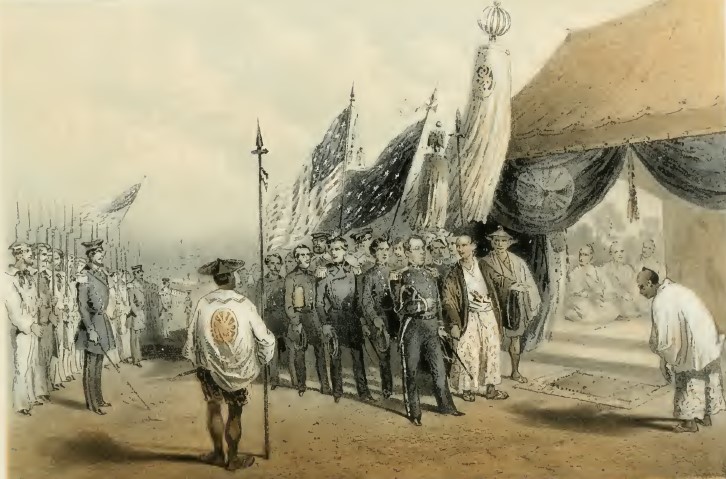


Displaying his audacity and readiness to use force, Perry’s approach into the forbidden waters around Tokyo convinced the Japanese authorities to accept the letter. His mission was to complete an agreement with the Japanese Government for the protection of shipwrecked or stranded Americans and to open one or more ports for supplies and refueling. At the same time, Perry brought along a variety of gifts for the Japanese Emperor, including a working model of a steam locomotive, a telescope, a telegraph, and a variety of wines and liquors from the West, all intended to impress upon the Japanese the superiority of Western culture. Navy ships, because he and others believed the only way to convince the Japanese to accept western trade was to display a willingness to use its advanced firepower. Perry arrived in Japanese waters with a small squadron of U.S. For the two centuries that followed, Japan limited trade access to Dutch and Chinese ships with special charters. Persistent attempts by the Europeans to convert the Japanese to Catholicism and their tendency to engage in unfair trading practices led Japan to expel most foreigners in 1639. Portuguese, Spanish, and Dutch traders engaged in regular trade with Japan in the 16th and 17th centuries. Perry was not the first westerner to visit the islands. Other Americans argued that even if the Japanese were unreceptive to Western ideals, forcing them to interact and trade with the world was a necessity that would ultimately benefit both nations.

In the case of Japan, missionaries felt that Protestant Christianity would be accepted whereas Catholicism had generally been rejected. American whaling industry too - sought safe harbors, assistance in case of shipwrecks, and reliable supply stations.Īt the time, many Americans believed that they had a special responsibility to modernize and civilize the Chinese and Japanese. The combination of its advantageous geographic position and rumors that Japan held vast deposits of coal increased the appeal of establishing commercial and diplomatic contacts with the Japanese. merchant ships.Īs American traders in the Pacific replaced sailing ships with steamships, they needed to secure coaling stations, where they could stop to take on provisions and fuel while making the long trip from the United States to China. government, forced Japan to enter into trade with the United States and demanded a treaty permitting trade and the opening of Japanese ports to U.S. On July 8, 1853, American Commodore Matthew Perry led his squadron of two steamers and two sailing vessels into the harbor at Tokyo Bay, seeking to re-establish for the first time in over 200 years regular trade and discourse between Japan and the western world.


 0 kommentar(er)
0 kommentar(er)
